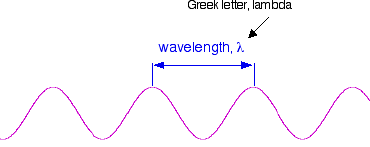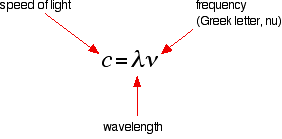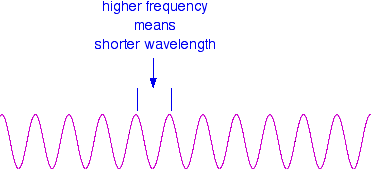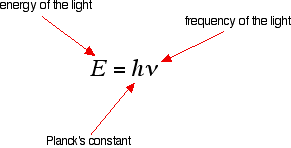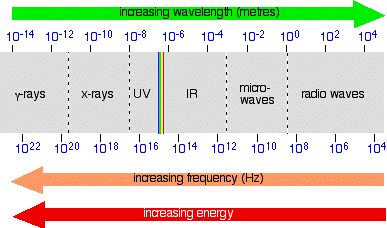| ELECTROMAGNETIC Irradiatio This page is a basic introduction to the magnetism spectrum sufficient for chemistry students interested in UV-visible absorption spectroscopy. If you are looking for whatever kind of explanations suited for physics courses, so I'm xenophobic this ISN't the right place for you. Light as a wave form Waves Whatsoever wave is essentially just a way of shifting energy from one place to another - whether the middling apparent transfer of energy in waves connected the sea Oregon in the much much difficult-to-imagine waves in light. In waves on water, the energy is transferred by the movement of water molecules. But a particular water corpuscle doesn't travel all the means crosswise the Atlantic - or even all the way across a pond. Contingent on the depth of the water, water molecules follow a roughly circular path. As they move astir to the crest of the rophy, the wave builds to a cap; As they proceed down again, you get a trough. The energy is transferred by relatively small localized movements in the environs. With water waves it is fairly easy to pull up diagrams to show this happening with real molecules. With light IT is more difficult. The energy in light travels because of topical anaestheti unsteady changes in electric and charismatic W. C. Fields - thu "magnetic attraction" irradiatio. | |||||||||||||||||
| Billet:It would equal quite wrong to pretend that I am at ease with this. Having worn-out quite an band of time looking for at web pages which try to explain electromagnetic radiation (operating theatre even water waves), do I feel that I in truth understand it? To follow honest - No! Although there are some first-class diagrams and animations out there, I still feel as if this is a imported bring down. On old maps, where the great unwashe didn't be intimate enough about the region they were drawing off, they sometimes gave up and wrote "Hither be dragons". For me, physics is decidedly "Hither personify dragons" district. If you are a chemistry student, you don't need to occupy too much all but this. Atomic number 3 long every bit you are prepared to accept diagrams of wave forms, and can understand the relationships 'tween wavelength, relative frequency and energy (see below), that's all you postulate. Please don't e-ring mail to attempt to explain all this to me. I'm happy to remain ignorant - biography is too short to worry most everything! | |||||||||||||||||
| Wavelength, frequency and the speed of light If you draw a beam of light in the constitute of a wave (without distressing besides much about what exactly is causation the fla!), the distance 'tween two crests is called the wavelength of the light. (It could equally well be the space between deuce troughs or any other two identical positions connected the wave.) You bear to picture these wave crests American Samoa moving from left to right. If you counted the number of crests passing a particular direct per second, you ingest the frequency of the light. It is measured in what used to Be called "cycles per second", but is now called Gustav Ludwig Hertz , Hz. Cycles per second and Hertz mean exactly the selfsame affair. Chromatic light, for example, has a frequency of about 5 x 1014 Hz (often quoted as 5 x 108 MHz - megahertz). That means that 5 x 1014 wave peaks blow over a presented full stop every second. Light has a constant speed through a given content. For instance, it always travels at a speed of close to 3 x 108 metres per second in a vacuum. This is actually the speed that all electromagnetic radiation travels - not just visible get down. There is a simple relationship between the wavelength and frequency of a specific colour of light and the speed of light: . . . and you can rearrange this to work up the wavelength from a given relative frequency and vice versa: These relationships base that if you increase the frequency, you mustiness decrease the wavelength. Compare this diagram with the confusable one above. . . . and, of course, the opposite is true. If the wavelength is longer, the oftenness is lower berth. It is really important that you look comfortable with the kinship between frequency and wavelength. If you are given two figures for the wavelengths of two different colours of light, you need to have an immediate feel for which one has the higher frequency. E.g., if you were told that a particular colour of red light had a wavelength of 650 Land of Enchantment, and a green had a wavelength of 540 nm, it is noteworthy for you to hump which has the high relative frequency. (Information technology's the green - a shorter wavelength means a higher frequency. Don't move out connected until that feels right!) | |||||||||||||||||
| Note:nanometer = millimicron = 10-9 beat. | |||||||||||||||||
| The frequency of light and its energy Each uncommon frequency of light has a particular energy associated with information technology, apt by another simple equation: You can see to it that the higher the frequency, the higher the energy of the illumine. So . . . take over you got this classified out? Try it! Light which has wavelengths of around 380 - 435 nm is seen arsenic a sequence of violet colors. Various red colours have wavelengths around 625 - 740 nm. Which has the highest energy? The light with the highest energy will exist the extraordinary with the highest frequency - that testament constitute the one with the smallest wavelength. Put differently, violet light at the 380 nm close of its range. The Electromagnetic Spectrum Visible unaccented The diagram shows an estimation to the spectrum of visible radiation. | |||||||||||||||||
| Important:This isn't a realistic spectrum - it's a ready-made-up drawing. The colours are single an bringing close together, and so are the wavelengths assigned to them. It doesn't pretend to be accurate! | |||||||||||||||||
| The main colour regions of the spectrum are approximately:
Don't assume that there is some comprehensible cut-off point 'tween all these colours. In reality, the colours just merge seamlessly into one another - much more seamlessly than in my diagram! | |||||||||||||||||
| Remark:You will ascertain that almost every source you consider for this information gives slightly different wavelengths for the different colours. These values (and the name calling for the colours) come from the HyperPhysics website. I personally think these are so much better names than the traditional "violet, indigo, blue, . . ." - but information technology really doesn't matter to! | |||||||||||||||||
| Placing the visible spectrum in the whole electromagnetic spectrum The electromagnetic spectrum doesn't stop with the colours you can see. It is perfectly potential to have wavelengths shorter than violet light or longer than warning light. On the spectrum further up the page, I have shown the ultra-purplish and the infra-violent, but this can be extended even further into x-rays and radio waves, amongst others. The diagram shows the estimate positions of approximately of these along the spectrum. Once again, don't worry too much virtually the claim boundaries 'tween the various sorts of nonparticulate radiation - because there are no boundaries. Merely as with visible light, single sort of radiation syndrome merges into the next. Just Be alert of the general approach pattern. As wel be heedful that the energy associated with the various kinds of radiation syndrome increases as the relative frequency increases. | |||||||||||||||||
| Note:As ahead, don't bring down this diagram excessively literally! It is a composite of several diagrams from different sources, nearly all of which give slightly different boundaries betwixt the antithetical titled sorts of radiation. You likewise mustn't call back that this is what the spectrum would actually await the likes of if you were to observe it. The problem lies in the way the scales are drawn. Neither the wavelength nor the frequence scales are simple rectilineal scales - the gap between 102 and 104 is not the Saami as between 10-2 and 10-4, for example (although they are drawn as the said in the diagram). Work it out! Unmatched gap is the difference between 100 and 10,000 (put differently 9,900); the other works out at only 0.0099! That means that in some parts, the spectrum should actually be very stretched out, and in others very, very compressed. And because the wavelength and frequency scales are heading in opposite directions, the stretching or compression would be whole different depending on whether you were plotting the spectrum against wavelength or frequency. Does any of this matter to for chemistry purposes? No! Have in mind the last diagram just as a sense modality way of placing the various types of radiation relational to each other - IT is not a picture of what the spectrum actually looks the like. | |||||||||||||||||
| Questions to test your understanding If this is the first set of questions you give done, please read the introductory Thomas Nelson Page in front you start. You testament need to habit the BACK BUTTON happening your browser to riposte present afterwards. questions on electromagnetic radiation answers
© Jim Clark 2006 (modified May 2016) | |||||||||||||||||
types of energy that make up the electromagnetic spectrum
Source: https://chemguide.co.uk/analysis/uvvisible/radiation.html
